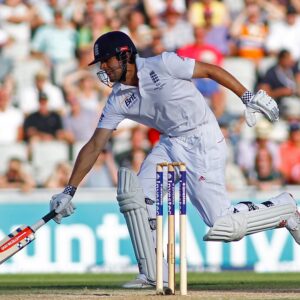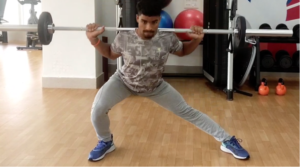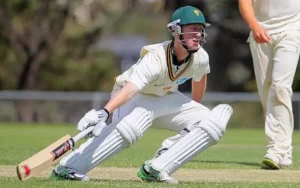The aim of this short article is to give an overview of the type of physical qualities required, as well as the movements performed in a game of cricket, in order to get you to thinking more about how this will impact how specifically you should look to prepare with your gym-based training.
Of course certain characteristics will change dependent on your size, what primary position you play (bowler, batter, keeper). However, this quick general overview gives a good outline of some of the major athletic requirements that are required in cricket, improvements in which will have functional carryover to games, and movement qualities.
As Tudor Bompa says ‘strength in sports should be viewed as the mechanism required to perform skills and athletic actions. Athletes do not just develop strength for the sake of being strong. The goal of strength development is to meet the specific needs of a given sport, to develop specific strength or combinations of strength to increase athletic performance to the highest possible level.’
So with that in mind, lets first look at a quick outline of the major physical movement qualities required in cricket, particularly as they relate to power output, and then take a quick look at the primary movement patterns and combinations themselves, based on the most commonly performed tasks in cricket.
Movement Qualities
Power – Power is the ability to generate strength quickly, or in other words the ability to apply maximum force in the shortest time. Power is also very task specific. So in cricket, the need for power refers to things like a powerful rotation by a batter, or a powerful takeoff or acceleration when looking to make a quick single or after a turn. All the following movement qualities tie in with power and are a quite brief introduction, as we will delve into this topic a little deeper in Strength & Power Training for Cricket – where we go deeper into power & plyometrics.
Power Endurance – Not only are the expressions of power in cricket important to be able to perform, but it is also important to be able to perform them repeatedly to as high an ability as possible. As such, the requirement for power also includes the requirement for power endurance.
Starting Power – Starting power is the ability to start a movement quickly, in its simplest terms. In a sport like cricket, where speed of movement is so important, both as an individual and as a collective, being able to generate maximum force at the beginning of a muscular contraction to create high initial speed is a good quality to have.
Acceleration – Or more specifically the need for acceleration power. Think of acceleration as what comes after starting power has been. These are particularly important when building up speed when coming in to deliver a ball, and particularly when running between wickets while batting (when it will just be about acceleration rather than top speed).

Deceleration – Efficient and well-coordinated deceleration is required, which requires a great deal of eccentric strength and power to achieve as well as to avoid soft tissue injury. This is why placing an over-emphasis on sprint training only, or running training only, misses the point, as there is no deceleration component to it. Sprinters are required only to run as fast as possible in a straight line, with no deceleration or change of direction required. This certainly isn’t the case in a game of cricket. So it is important to note with effective deceleration, the aim here is not only to effectively perform it, but also for the tendons, ligaments and joint attachments to effectively absorb and cope with this loading. High deceleration power is required when running between wickets while batting, as well as in the final couple steps of a bowling delivery.

Change of Directions – This ties in greatly with deceleration, where the ability to effectively decelerate often sets you up to be able to effectively change directions. Following the deceleration, the ability to effectively and powerfully push back off in the next direction is a key movement ability particularly when batting.


A lateral lunge is a great exercise for training the ability to decelerate the stepping motion and reaccelerate when changing directions running between the wickets.
Landing Power – Landing power is to jumping what deceleration power is to sprinting, and equally as forgotten in physical training. Many players train only the takeoff part of a jump, with no concern for a controlled and balanced landing. Landing power is the ability to eccentrically control a landing consistently. This is especially important to train consistently if you find yourself leaving the ground regularly during a game. You may think ‘hang on a minute, we do not jump much in cricket.’ However, the final steps in a bowling action are the same general landing mechanics (pace bowling in particular). Only that they are landing in an awkward stance, coming from an awkward forward and down position, and occur at a higher speed than a normal landing. So all in all, they are harder than what you would traditionally think of in ‘landings’.
As with the deceleration in sprinting, our physical concern here is not only to effectively perform this movement, but also for the tendons, ligaments and joint attachments to effectively absorb and cope with such a loading upon landing.
Throwing Power – Throwing power refers to the force applied against an implement – in our case a cricket ball. The release speed of the ball when throwing it is determined by the amount of muscular force exerted at the instant of release.
Rotation – Once again, when talking about the need for rotation, it is mainly the throwing action that we are talking about. This requires both a powerful torso rotation as well as a shoulder and arm rotation. We will cover this in detail next section.
Core and Pelvic Stability (when changing directions, landing, etc) – This is a very broad and all-encompassing requirement. ‘Core and hip stability’ isn’t overly specific, and as we have covered previously the role of certain muscle groups can change dependent on what pattern of movement or task is being performed. However, the key point here is that there is a great deal of hip stability coupled with core stability required in commonly performed (and seemingly simple) tasks such as running and landing. It is also important that this core and hip stability is trained in similar positions to those that they will be required in when performing these tasks. It is no good having great core and hip stability performing planks and other exercises on the floor, if these abilities aren’t transferred to positions that they will be required in a match, particularly standing, as lying on the floor is not the position that you play a game of cricket in (task and movement specific remember.) As a result, many of the exercises that you will come across (with several of the single leg exercises being good examples) have been selected also with this requirement in mind.
Joint Stability and Mobility & Injury Prevention – This is another point that is very broad, and something that we do cover in a lot more detail in Strength & Power Training for Cricket. Whole body joint stability as well as mobility is important to not only maximize performance at certain tasks, but also to minimise injury when performing them. We have also mentioned the importance of training hip stabilisation when performing dynamic single-leg movement, however shoulder stability is another one that is vital – and indeed we cover this in more detail elsewhere. How many people playing cricket have dodgy shoulders? Or weak ankles after rolling them so many times that the ligaments in the ankles have been irreparably stretched? Point made! Therefore whilst this isn’t a movement ‘pattern’ as such, it is certainly a physical requirement for effective performance.
Performing all these tasks with proficiency in all 3 planes of motion – We covered this point in an earlier article, but it is important to touch on again just as a quick reminder. When training to improve for the tasks above, remember that they are performed in a dynamic environment, standing, and involving movement and stability in all 3 planes of motion. Don’t fall into the old trap of performing sagittal plane dominant exercises, or even worse exercises on machines where no ability is required.
When breaking things down in this way, it is clear how dynamic and complex many of the movement demands within a game of cricket are. It should be clear that standard bodybuilding programs and exercises will not be in any way beneficial to these demands of cricket, and rather more targeted athletic programming is needed.
So when piecing together how you will train, begin here, looking at the broad demands that you are actually training for.

Cricket Athlete